
South Australian Medical Heritage Society Inc
Website for the Virtual Museum
Home
Coming meetings
Past meetings
About the Society
Main Galleries
Medicine
Surgery
Anaesthesia
X-rays
Hospitals,other organisations
Individuals of note
Small Galleries
Ethnic medicine
- Aboriginal
- Chinese
- Mediterran
Medical Linear AcceleratorsAn account of the first South Australian Linear Accelerator ("LA1")
Acknowledgment: We are grateful to Mr. Andrew Frolov Manager of the Radiation Engineering Section, RAH Medical Physics Department, who kindly provided the relevant information and allowed us to photograph a current model linear accelerator. We also thank Dr. Eva Bezak the Director and Mr. Ralph Nicholls for their helpful comments.
The linear accelerator uses microwave technology (similar to that used for radar) to accelerate electrons and other charged particles to very energies close to the speed of light in a part of the accelerator called the "wave guide", For medical use the electrons collide with a heavy metal target producing very high-energy x-rays. A portion of these x-rays is shaped to form a beam to match the patient's tumour. The beam can be rotated around the patient. Physicists use various types of high energy accelerators in particle atomic research. In this field (Synchrotons) the charged particle is accelerated in a circle, the adjective "linear" is used for accelerators which accelerate the particles in a straight line. Their medical use was pioneered by Henry Kaplan at Stanford University . It is a good example of the cooperation between researchers in different scientific disciplines in developing new clinical applications of an established research tool.
The first use of linear accelerator in medicine dates from the 1950s, The penetration in body tissues surpasses that from the previously used Deep 250 kilovolt X-Ray therapy machines. By the use of absorbers it can also be adjusted to provide a required depth of penetration depending on a particular treatment. The alternative high voltage therapy machine uses a radioactive source, Cobalt 60, which produces Gamma rays. However the source about 2 cm. in diameter produces a geometric penumbra and a fuzzy edge to the radiation field. Cobalt 60 has a half-life of 5.27 years, and this decrease in activity required periodic replacement, one reason why cobalt machines have been replaced by linear accelerators.
The Royal Adelaide Hospital purchased its first linear accelerator in 1957 partly funded by public contributions. It was one of the earliest models called "LA1", manufactured by Metropolitan Vickers of Manchester. It was used to treat patients with malignancies, but the gantry could only rotate110 degrees in each direction. Thus in order to treat several fields of the same tumour the patient had to be rotated.
"LA1" was decommissioned in the 1980s and because of its unique historical value it was acquired by the then Children's Hospital. It was initially stored in the Glenside laundry, which became available as the Adelaide Hospitals changed to central laundry services. Later when the laundry was "re-possessed" for further use it was placed outside and covered with a tarpaulin. When this perished it became exposed to the weather.
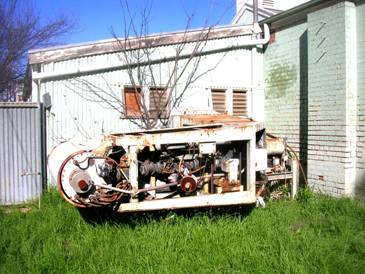 Recent photograph of the LA1 outside the laundry at Glenside .
Recent photograph of the LA1 outside the laundry at Glenside .
It was installed at the RAH in 1957 and decommissioned in the 1980s.
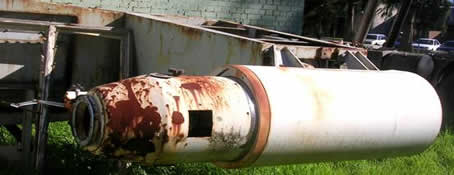 The LA1 lying on its side. It is attached to a gantry which allowed it to be rotated around the patient.
The LA1 lying on its side. It is attached to a gantry which allowed it to be rotated around the patient.
The accelerator is on the right, and the collimator which focuses the x-rays is on the left.
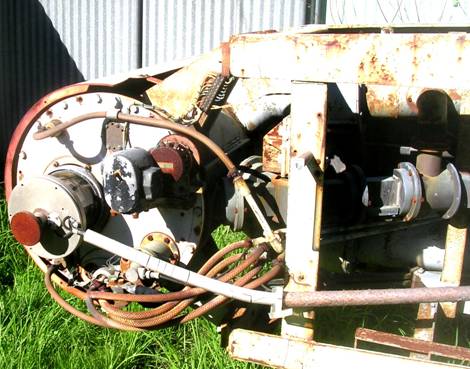 Top part of the accelerator showing the high tension leads supplying power (in white) and pipes supplying water for cooling (orange)
Top part of the accelerator showing the high tension leads supplying power (in white) and pipes supplying water for cooling (orange)
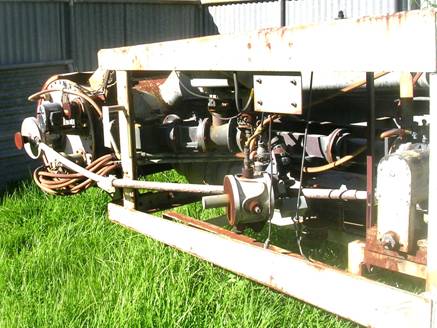 Another part of the accelerator showing the RF (radio frequency) system which accelerated the electrons produced by the electron gun (left)
Another part of the accelerator showing the RF (radio frequency) system which accelerated the electrons produced by the electron gun (left)
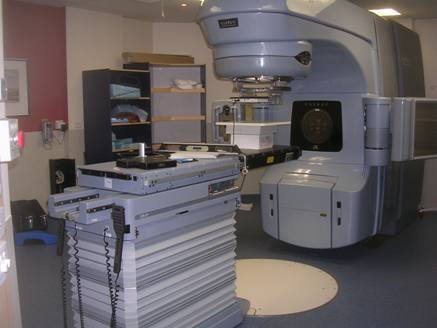
LA 11: One of the 5 modern RAH dual modality multi-energy linear accelerators with an imaging system for precise patient positioning and a multileaf collimator defining the complex shaped radiation fields.
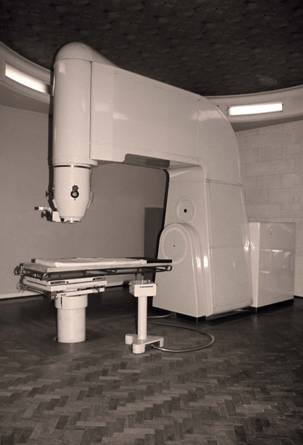 Metrovic Series D II:
Metrovic Series D II:
A linear accelerator
similar to the original LA 1
-o0o-